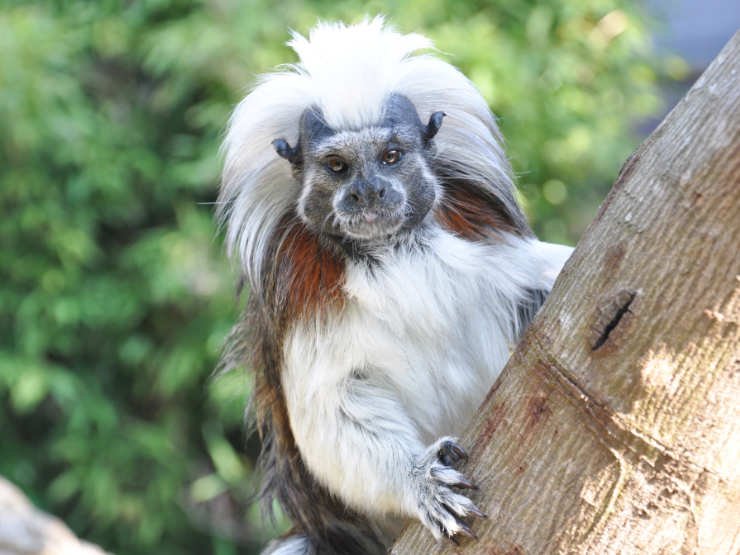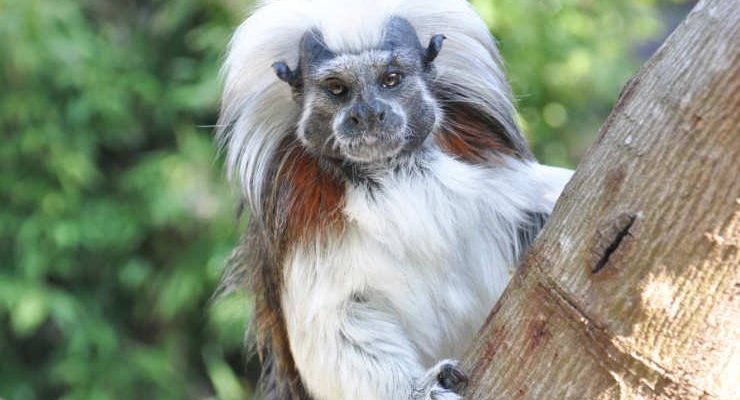
Imagine your favorite coffee shop about to close its doors forever; that’s what the situation feels like for tamarins in the wild. They play essential roles in their ecosystems, like spreading seeds and keeping the forest healthy. However, due to habitat loss and other human activities, their numbers are dwindling. In this article, we’ll explore the different tamarin species, the reasons for their endangerment, conservation efforts around the globe, and what we can do to help.
Understanding Tamarin Species
Tamarins are small monkeys found primarily in Central and South America. Think of them as the adorable acrobats of the primate world. They belong to the family Callitrichidae and are divided into several species, each with unique traits and behaviors. For example, the golden lion tamarin is easily recognizable with its vivid orange mane, while the moustached tamarin has distinct facial hair that gives it a wise look.
Each species has adapted to its specific environment. For instance, the common marmoset prefers the edges of forests, while the saddleback tamarin is usually found deeper in the woods. They mostly feed on fruits, insects, and small vertebrates. You might be wondering why this diversity matters. Well, the more varied the species, the healthier the ecosystem. Each tamarin plays a role in maintaining the balance in its habitat.
To get a better idea of these remarkable animals, let’s take a closer look at a few specific types of tamarins:
- Golden Lion Tamarin: Known for its striking orange fur, it primarily resides in Brazil’s Atlantic Forest.
- Black Tamarin: This species is harder to spot, often blending into the shadows of the rainforest.
- Emperor Tamarin: With its distinctive mustache-like facial hair, it’s one of the most recognizable tamarins.
Why Are Tamarins Endangered?
The simple truth is that tamarins are facing serious threats. Habitat loss is the primary danger, largely due to deforestation. Picture huge trees being chopped down to create roads or farmland. When their homes vanish, tamarins have nowhere to go. This loss of habitat not only reduces their living space but also impacts their food sources, making survival increasingly challenging.
Alongside habitat destruction, there’s also illegal pet trade. Some people capture tamarins to sell them as exotic pets. This isn’t just cruel; it disrupts their natural populations. Wild tamarins are not suited for life in captivity, and many suffer in these conditions. As appealing as they might look, they belong in the wild, swinging through trees, not stuck in a cage.
Moreover, climate change is the silent killer lurking in the background. It changes weather patterns, affects food availability, and can lead to increased disease. All of these factors combine to push tamarins closer to the brink. To put it bluntly, if we don’t act now, we might lose these incredible creatures forever.
Conservation Efforts Around the World
Fortunately, there’s hope! Many organizations and conservationists are working hard to protect tamarins and their habitats. For example, the Golden Lion Tamarin Association has made great strides to protect these monkeys in Brazil. They focus on habitat restoration, creating protected areas, and educating local communities about the importance of preserving these unique creatures.
Apart from local efforts, international collaborations also play a vital role. Various wildlife organizations work together to share knowledge and resources. They often engage in initiatives to stop illegal pet trade and promote ecotourism as a way for locals to benefit from protecting their natural environment. If communities see tangible benefits from preserving wildlife, they’re more likely to support conservation efforts.
Additionally, scientific research is crucial. Understanding tamarins’ behaviors, reproductive patterns, and health can help conservationists develop better strategies for maintaining their populations. Even small actions, like participating in citizen science projects, can contribute to larger conservation goals.
The Role of Ecotourism in Conservation
Have you ever traveled somewhere just to see wildlife? That’s the idea behind ecotourism. It not only helps raise awareness about endangered species like tamarins but also provides an economic incentive for locals to protect their environment. Tourists eager to catch a glimpse of these monkeys contribute financially to conservation efforts by visiting protected areas.
When done right, ecotourism can foster a deeper appreciation for wildlife. Tour operators often educate visitors about the importance of preserving habitats, making each trip more than just a vacation. It’s like turning a simple trip into a mission to help save the planet.
However, it’s crucial for ecotourism to be sustainable. Overcrowding and disruption to wildlife can cause more harm than good. Responsible tourism practices should focus on minimizing impact on the environment while enhancing the lives of local communities.
How You Can Help Protect Tamarins
Feeling inspired to help? There are plenty of ways you can make a difference in tamarin conservation efforts. Here’s the thing: you don’t have to be a scientist or a conservationist to contribute positively.
- Educate Yourself: Understand the issues surrounding tamarin endangerment. Knowledge is power! The more you know, the better advocate you can be.
- Support Conservation Organizations: Consider donating to or volunteering with organizations working to protect tamarins and their habitats.
- Spread Awareness: Share information about tamarins on social media or with friends. The more people know, the more support there’ll be for conservation efforts.
- Choose Sustainable Products: Be mindful of your purchases. Supporting sustainable and eco-friendly brands can have a ripple effect on protecting wildlife.
So, are tamarins endangered? Absolutely, but they are not without hope. Through dedicated conservation efforts, community involvement, and a global push towards sustainable practices, there’s a chance to turn the tide. Every little action contributes to a larger goal of preserving these delightful creatures and their habitats.
As you sip your coffee and think about the world around you, remember that the fate of tamarins—and many other species—rests in our hands. Let’s do our part to ensure that future generations can marvel at the wonder of tamarins swinging through the trees, just like we do today. Together, we can make a difference!

